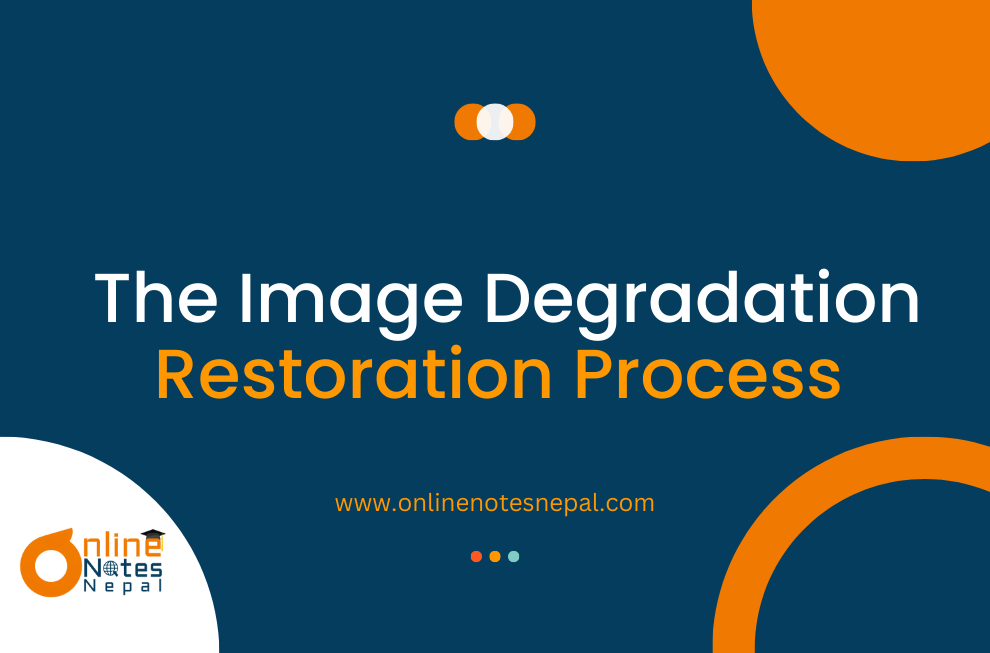Published by: Neha Khadka
Published date: 25 Jul 2024

The image degradation and restoration process involves several key steps and techniques aimed at improving the quality of degraded images. Here’s an overview of the process:
Image degradation refers to the loss of image quality due to various factors, which can include
Noise: Abrupt changes in an image's brightness or color information, frequently brought on by transmission mistakes, environmental factors, or sensor limits.
Blur: Sharpness loss brought on by atmospheric factors, out-of-focus lenses, or camera movement.
Compression artifacts: Quality loss brought on by lossy compression methods, such JPEG.
Geometric Distortions: The stretching or warping of a picture due to defects in the lens or camera angle.
Additional Artifacts: Like ghosting, ringing, or color bleeding.
Image restoration aims to reverse the degradation process and recover the original image quality as much as possible. The restoration process typically involves several techniques and steps:
Spatial Filtering: Noise reduction with edge preservation using methods such as bilateral filtering, median filtering, and Gaussian smoothing.
Frequency domain filtering: Methods to eliminate particular frequency components linked to noise, such as Wiener or notch filtering.
Inverse Filtering: Recovering the original image with inverse filtering involves applying the blur function's inverse.
Wiener Filtering: A method of deconvolution that considers both noise and blur.
Blind Deconvolution: When the blur function is unknown, blind deconvolution involves estimating both the blur and the original image.
Denoising Algorithms: Techniques like Non-Local Means (NLM) or BM3D to reduce blockiness and ringing artifacts.
Deep Learning Methods: Using neural networks to learn and remove compression artifacts.
Transformation Techniques: To fix distortions, use projective or affine transformations.
Warping Algorithms: These algorithms fix non-linear distortions by interpolating and using control points.
Contrast Enhancement: Techniques to increase contrast include contrast-limited adaptive histogram equalization (CLAHE) and histogram equalization.
Sharpening: Using methods to bring out details and edges, such as unsharp masking.
By following these steps and utilizing advanced techniques, the image degradation/restoration process aims to recover and enhance image quality effectively.